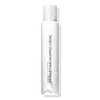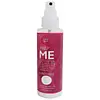What's inside
What's inside
 Benefits
Benefits

 Concerns
Concerns

 Ingredients Side-by-side
Ingredients Side-by-side

Water
Skin ConditioningCarbon Dioxide
Cetearyl Alcohol
EmollientPetrolatum
EmollientParaffinum Liquidum
EmollientCetrimonium Chloride
AntimicrobialPanthenol
Skin ConditioningParfum
MaskingMethylparaben
PreservativePropylparaben
PreservativeMaris Sal
Skin ConditioningDisodium EDTA
Linalool
PerfumingHexyl Cinnamal
PerfumingBenzyl Salicylate
PerfumingBenzyl Alcohol
PerfumingHydroxyisohexyl 3-Cyclohexene Carboxaldehyde
MaskingCitronellol
PerfumingBenzyl Benzoate
AntimicrobialGeraniol
PerfumingLimonene
PerfumingWater, Carbon Dioxide, Cetearyl Alcohol, Petrolatum, Paraffinum Liquidum, Cetrimonium Chloride, Panthenol, Parfum, Methylparaben, Propylparaben, Maris Sal, Disodium EDTA, Linalool, Hexyl Cinnamal, Benzyl Salicylate, Benzyl Alcohol, Hydroxyisohexyl 3-Cyclohexene Carboxaldehyde, Citronellol, Benzyl Benzoate, Geraniol, Limonene
Water
Skin ConditioningCetearyl Alcohol
EmollientBehentrimonium Chloride
PreservativeCyclopentasiloxane
EmollientParfum
MaskingBenzyl Alcohol
PerfumingCyclohexasiloxane
EmollientAmodimethicone
Ethylhexyl Methoxycinnamate
UV AbsorberDimethiconol
EmollientCeteareth-20
CleansingCetrimonium Chloride
AntimicrobialSelaginella Lepidophylla Extract
EmollientDehydroacetic Acid
PreservativeC11-15 Pareth-5
EmulsifyingC11-15 Pareth-9
EmulsifyingHydrolyzed Silk
HumectantAcetic Acid
BufferingPhenoxyethanol
PreservativeDecylene Glycol
Skin ConditioningCaprylyl Glycol
EmollientLinalool
PerfumingLimonene
PerfumingHexyl Cinnamal
PerfumingCitronellol
PerfumingLactobacillus Ferment
Skin ConditioningAlpha-Isomethyl Ionone
PerfumingGeraniol
PerfumingPotassium Sorbate
PreservativeSodium Benzoate
MaskingWater, Cetearyl Alcohol, Behentrimonium Chloride, Cyclopentasiloxane, Parfum, Benzyl Alcohol, Cyclohexasiloxane, Amodimethicone, Ethylhexyl Methoxycinnamate, Dimethiconol, Ceteareth-20, Cetrimonium Chloride, Selaginella Lepidophylla Extract, Dehydroacetic Acid, C11-15 Pareth-5, C11-15 Pareth-9, Hydrolyzed Silk, Acetic Acid, Phenoxyethanol, Decylene Glycol, Caprylyl Glycol, Linalool, Limonene, Hexyl Cinnamal, Citronellol, Lactobacillus Ferment, Alpha-Isomethyl Ionone, Geraniol, Potassium Sorbate, Sodium Benzoate
Ingredients Explained
These ingredients are found in both products.
Ingredients higher up in an ingredient list are typically present in a larger amount.
Benzyl Alcohol is most commonly used as a preservative. It also has a subtle, sweet smell. Small amounts of Benzyl Alcohol is not irritating and safe to use in skincare products. Most Benzyl Alcohol is derived from fruits such as apricots.
Benzyl Alcohol has both antibacterial and antioxidant properties. These properties help lengthen the shelf life of products. Benzyl Alcohol is a solvent and helps dissolve other ingredients. It can also improve the texture and spreadability.
Alcohol comes in many different forms. Different types of alcohol will have different effects on skin. This ingredient is an astringent alcohol.
Using high concentrations of these alcohols are drying on the skin. They may strip away your skin's natural oils and even damage your skin barrier. Astringent alcohols may also irritate skin.
Other types of astringent alcohols include:
According to the National Rosacea Society based in the US, you should be mindful of products with these alcohols in the top half of ingredients.
Any type of sanitizing product will have high amounts of alcohol to help kill bacteria and viruses.
Learn more about Benzyl AlcoholCetearyl alcohol is a mixture of two fatty alcohols: cetyl alcohol and stearyl alcohol. It is mainly used as an emulsifier. Emulsifiers help prevent the separation of oils and products. Due to its composition, it can also be used to thicken a product or help create foam.
Cetearyl alcohol is an emollient. Emollients help soothe and hydrate the skin by trapping moisture.
Studies show Cetearyl alcohol is non-toxic and non-irritating. The FDA allows products labeled "alcohol-free" to have fatty alcohols.
This ingredient is usually derived from plant oils such as palm, vegetable, or coconut oils. There is debate on whether this ingredient will cause acne.
Due to the fatty acid base, this ingredient may not be Malassezia folliculitis safe.
Learn more about Cetearyl AlcoholThis ingredient is a preservative, antimicrobial, and emulsifier. It is often used in cosmetics for its ability to cleanse, condition, and reduce static.
Cetrimonium chloride is a quaternary ammonium salt, meaning it has a water-soluble structure.
Citronellol is used to add fragrance/parfum to a product. It is often derived from plants such as roses. In fact, it can be found in many essential oils including geranium, lavender, neroli, and more. The scent of Citronellol is often described as "fresh, grassy, and citrus-like".
Since the Citronellol molecule is already unstable, Citronellol becomes irritating on the skin when exposed to air.
Citronellol is a modified terpene. Terpenes are unsaturated hydrocarbons found in plants. They make up the primary part of essential oils.
Citronellol is not able to be absorbed into deeper layers of the skin. It has low permeability,
Citronellol is also a natural insect repellent.
Learn more about CitronellolGeraniol is used to add fragrance/parfum to a product. It is the main component of citronellol. It is a monoterpenoid and an alcohol.
Monoterpenes are naturally found in many parts of different plants.
Geraniol can be found in many essential oils including Rose Oil and Citronella Oil. The scent of Geraniol is often described as "rose-like". Many foods also contain Geraniol for fruit flavoring.
Geraniol can irritate the skin when exposed to air. However, irritation depends on the ability of geraniol to penetrate into the skin. In general, geraniol is not able to penetrate skin easily.
Geraniol is colorless and has low water-solubility. However, it is soluble in common organic solvents.
Like citronellol, it is a natural insect repellent.
2,6-Octadien-1-ol, 3,7-dimethyl-, (2E)-
Learn more about GeraniolHexyl Cinnamal is a fragrance ingredient with a similar scent to jasmine. It can be naturally found in chamomile essential oil.
This ingredient is a known EU allergen and may sensitize the skin. The EU requires this ingredient to be listed separately on an ingredients list.
Hexyl Cinnamal is not water soluble but is soluble in oils.
Learn more about Hexyl CinnamalLimonene is a fragrance that adds scent and taste to a formulation.
It's found in the peel oil of citrus fruits and other plants such as lavender and eucalyptus. The scent of limonene is generally described as "sweet citrus".
Limonene acts as an antioxidant, meaning it helps neutralize free radicals.
When exposed to air, oxidized limonene may sensitize the skin. Because of this, limonene is often avoided by people with sensitive skin.
The term 'fragrance' is not regulated in many countries. In many cases, it is up to the brand to define this term. For instance, many brands choose to label themselves as "fragrance-free" because they are not using synthetic fragrances. However, their products may still contain ingredients such as essential oils that are considered a fragrance.
Learn more about LimoneneLinalool is a fragrance and helps add scent to products. It's derived from common plants such as cinnamon, mint, citrus, and lavender.
Like Limonene, this ingredient oxidizes when exposed to air. Oxidized linalool can cause allergies and skin sensitivity.
This ingredient has a scent that is floral, spicy tropical, and citrus-like.
Learn more about LinaloolParfum is a catch-all term for an ingredient or more that is used to give a scent to products.
Also called "fragrance", this ingredient can be a blend of hundreds of chemicals or plant oils. This means every product with "fragrance" or "parfum" in the ingredients list is a different mixture.
For instance, Habanolide is a proprietary trade name for a specific aroma chemical. When used as a fragrance ingredient in cosmetics, most aroma chemicals fall under the broad labeling category of “FRAGRANCE” or “PARFUM” according to EU and US regulations.
The term 'parfum' or 'fragrance' is not regulated in many countries. In many cases, it is up to the brand to define this term.
For instance, many brands choose to label themselves as "fragrance-free" because they are not using synthetic fragrances. However, their products may still contain ingredients such as essential oils that are considered a fragrance by INCI standards.
One example is Calendula flower extract. Calendula is an essential oil that still imparts a scent or 'fragrance'.
Depending on the blend, the ingredients in the mixture can cause allergies and sensitivities on the skin. Some ingredients that are known EU allergens include linalool and citronellol.
Parfum can also be used to mask or cover an unpleasant scent.
The bottom line is: not all fragrances/parfum/ingredients are created equally. If you are worried about fragrances, we recommend taking a closer look at an ingredient. And of course, we always recommend speaking with a professional.
Learn more about ParfumWater. It's the most common cosmetic ingredient of all. You'll usually see it at the top of ingredient lists, meaning that it makes up the largest part of the product.
So why is it so popular? Water most often acts as a solvent - this means that it helps dissolve other ingredients into the formulation.
You'll also recognize water as that liquid we all need to stay alive. If you see this, drink a glass of water. Stay hydrated!
Learn more about Water